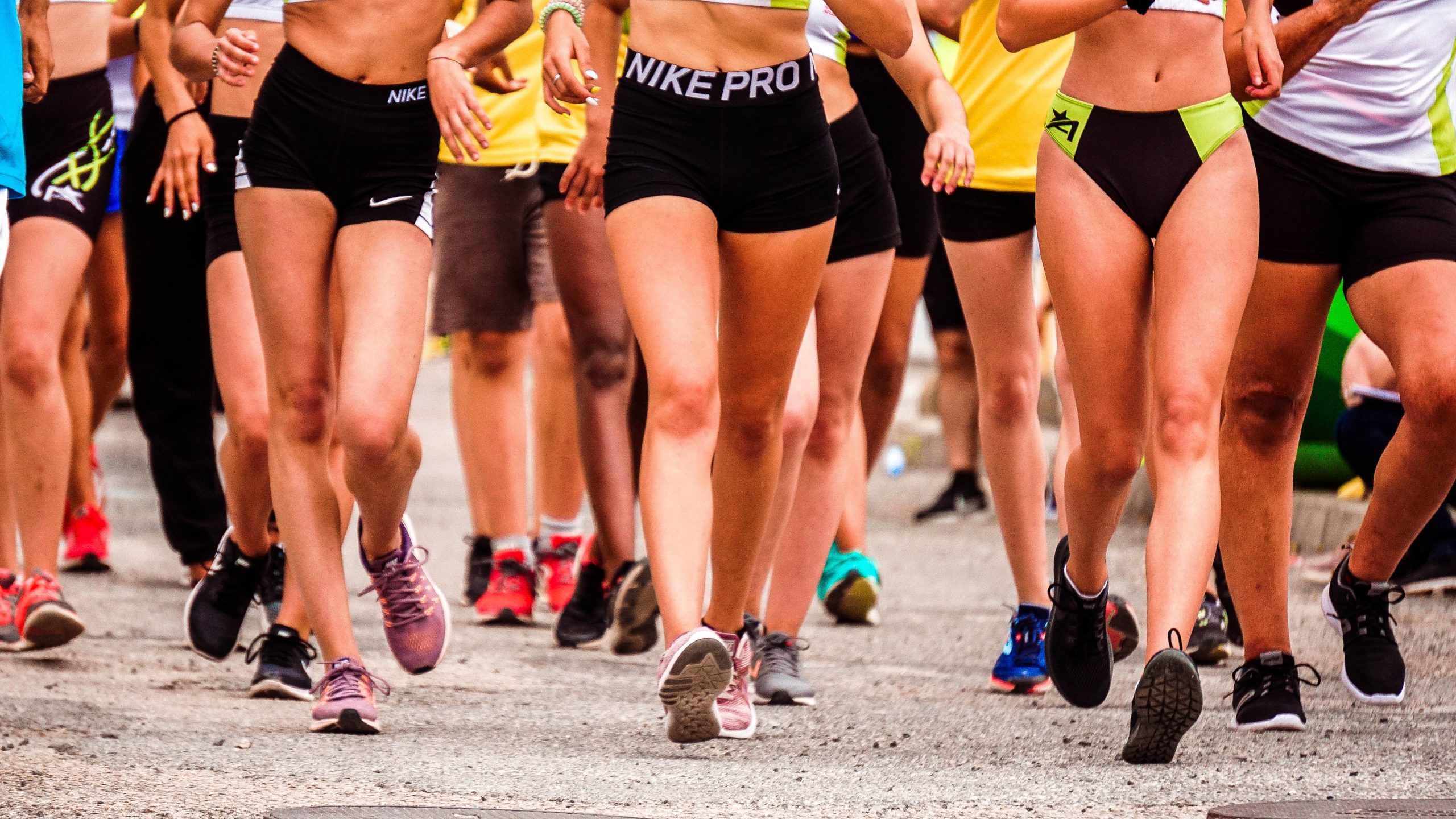1. Check the weather forecast
Being aware of the weather conditions will define what you need to wear for your triathlon race. If it’s looking like its going to be fresh with predicted showers then you might need an extra jumper or a windproof jacket. For a particularly sunny day, then you might want a sunhat for the run leg plus you’ll be slapping on that waterproof sun cream and possibly even adding a few extra electrolyte tablets to your race nutrition plan.
Remember also that you’ll want to have the right clothes to arrive and set up for the race. Getting cold before you even start is not fun, so make sure you have the right layers on top of your triathlon kit whilst you are setting up.
2. Pack your triathlon race bag
So you’ve understood what clothes you will need based on the weather forecast. Lay everything out on your bed and visualise yourself going through the race transitions. Take yourself through each motion and take note of what you will be removing and picking up between each transition. If you need some guidance on what you’ll need to take, fear not, we’ve prepared a Beginner Triathlon Kit List for Women!
2. Pack your after clothes bag and check if they have shower area
So you’ll most probably want to get out of your race kit at some point after the race (unless you LOVE it that much). You will be wet and sweaty and so if it’s not a hot day, you will easily get cold quickly. Check if the venue has showers so you can take your shower gel, shampoo, hairbrush and flip flops as well as a towel.
3. Prepare your Nutrition for the race
You should have already tried and tested out what you plan to eat before and during the race. It’s really important not to change what you are used to eating as our bodies react to foods in different ways. Don’t give your body a shock by randomly deciding to take some energy bars or gels that you have never tried before.
Now get a little bag ready for your before race snacks, pop your during the race nutrition and drink in your race bag and tick ‘Nutrition’ off your list.
4. Plan out the timings to take nutrition
Yes, now you have decided what you’re going to eat, it’s now important to plan out when you are going to eat and drink, both before the race and during. Getting this right is also imperative to make sure you have energy throughout the duration of the race without waiting to drop on your energy levels. Get a notepad and jot down your nutrition plan and the food you have packed. With the timings worked out, you can be sure to take with you the right amount of nutrition for your race.
For example, preparing for my Olympic triathlon: 2.5 hours before the race, I write that I must eat plain boiled potatoes with salt. 1 hour before the race, I take an energy drink. Then after pedaling for 30 minutes on the bike leg, I need to take a energy gel, and every 10 minutes I will take a sip of water or energy drink. Every 45 minutes I will continue to take a gel. For the run, I will try to take one every 30 minutes.
5. Prepare & Clean your bike
Yes, that dreaded job of cleaning the bike. We all despise that part. But it’s an easy win to save up on energy levels to reach the end and go that little bit faster. Making your chain clean and smooth is definitely going to help.
Be sure to know what tyre pressure your specific bike tyre needs. Different tyres and bikes need to be pumped up to different air pressures, so make sure you know your tyre requiements. (If you’re unsure, it usually says on the outside of the tyre itself). Pump up your tyres on the day of the race so you are sure that they are under the right conditions before reaching the correct air tyre pressure.
6. Prepare your trainers with your elastic laces
If it’s something you have decided to use during the triathlon race, then you’ll need to thread the new laces on your trainers. It’s best to do this a week or two before so that your feet are used to running in them. It may seem a little precise to do this, but avoiding any change however small it seems, wilmost importantly avoid injury but also you will feel less anxious if you are able to remove as many ‘unknowns’ as possible.
7. Check you have the necessary equipment to carry your bike
So if the race isn’t just down the road, you’ll need to find a way to transport your bike to the race. If you’re going by train, have you purchased a ticket for your bike? If you’re going by car, check that you can safely put it in the car if it’s not going to be full of people. If it won’t fit inside, then you’ll need a plan B. Taking off the wheels will help you fit your bike into a much smaller space. An alternative option is to get hold of a bike rack for the car. You can get a simple one from Amazon, that is quick to attach for about £50. Make sure that the bike rack you choose meets the requirements for your car and check the law to understand if you need an extra warning sign attached to the back, like this Fiamma Reflector Signal Plate.
8. Look at the race course and race rules
You will have already read the race rules when they were sent to you by email, or on the website of the race organisation. Now it’s time to re-read the race rules and take everything in. Know when are; the start times, when you must attend the briefing, the entry times into transition area to set up, how many laps of each leg you have to complete, understand where the nutrition aid stations are…and so on. If you are unsure about anything, make a note and on arrival you can ask the volunteers or race adjudicators to clarify any doubts you have.
9. Charge, set up and test your watch
If you have a sports watch that you intend to use on the day of the race then make sure it is fully charged the night before. Then take some time to test out the settings, and change the screen displays to show what you want to see when you’re racing. Some watches don’t have the triathlon mode, but there are widgets or apps that can be downloaded to enable you to do this. If not, that’s fine too. Keeping it simple is sometimes better so it’s also good enough to see your heart rate and the time.
10. Plan your journey and timings
Give yourself plenty of time to get to the race venue and to set up. If all things go to plan, then fantastic, but it’s also worth considering adding extra time for those unlikely circumstances. Planning in some leeway time is going to help keep you calm and under control rather than leaving things to the last minute and rushing around where you are likely to forget important things.
Look at how long your journey will take and add on time for some traffic delays. Then work back from when you need to collect your race pack and/or set up transition if you already have your race pack. Although we’ve put this as number 10, this is probably the most important part of the triathlon 101 guide to pre-race planning! Just think, if you don’t arrive in time or you miss the triathlon transition zone open time, then your entire race has finished before it even started!
11. Tell people – it’s a big deal!
I don’t know about you, but when a race is coming up, triathlon is all we want to talk about. We get super excited, it helps us talk us through all the necessary steps and so it comes quite naturally. It’s also the peak moment as it’s a time to reflect on all the training that we have done in order to arrive at a triathlon race and feel confident and ready to take on the challenge. We ask friends and family if they want to come and watch, maybe with the hope that they will want to join us in the triathlon world too! 🙂
12. Get your perfect music playlist ready
For your travel journey, you’ll want to put on your best playlist to get you feel excited, yet calm and focused! How you start the morning mentally will play a big part in the performance of your triathlon race.


